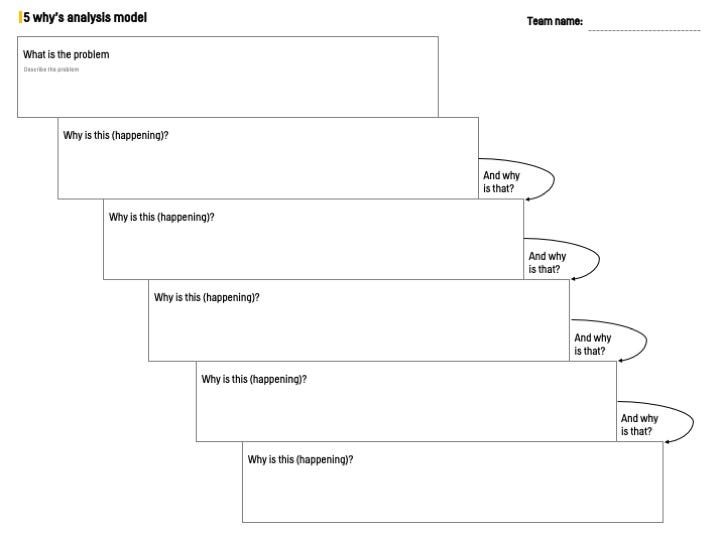Engaging meetings, is it possible?
About 2 years ago I Was so fed up with yet another boring meeting, that I decided to do something about it.
I started looking for tips and tricks for more productive meetings. I can recommend you posts like “10 simple ways to have more productive meetings” featured on Forbes and “12 secrets to a super productive meeting you should know” from Lifehack.org. Always have an agenda, send clear invites, make meeting minutes, follow up on to do’s, and so on. Still, I was not satisfied. And then it hit me; why don’t I use my background in process optimization and my love for Service Design to design better meetings?
“He who is well prepared has half won the battle.”
Meeting rationale
First focus on the meeting rationale. Not clear? Cancel the meeting! No need in ‘designing a great meeting’ if you do not have a clear goal. Found a clear goal? Prepare the meeting like it is a workshop or a play. Know the audience, design the meeting, rehearse, manage time to the minute and make sure to go out with a bang.
I like to use the method of the 5 why’s. Simply explained, ask yourself why you are organizing this meeting, and 4 more times why on the consequent answers. Empathizing with the results you want to achieve will help you create the meeting rationale. Include this in your meeting invite and you probably will have more enthusiastic participants.

Our five why template
Know the participants
In Service Design we put a fair amount of energy in gathering insights in who will use your product or service and how. Apply this to your meeting by trying to step in the participants’ shoes: Who is participating? What will they expect? And not expect? How do we achieve a win-win-win? Win for the project/topic, win for the individual and win for the team? Don’t be shy and test your assumptions.
Design the meeting
No, not a PowerPoint slide with the agenda of the meeting or a list of topics. Think beyond ‘normal’ meeting preparation. Step in the participants’ shoes and design the meeting using the customer journey approach. Don’t limit yourself to the duration of the meeting but think of everything, from preparation to follow-up.
What tools/methods/materials are needed to prepare for the meeting? What if the beamer doesn’t work?
- Travel. How will participants go to your meeting? Can you help them? Think of reminder, floorplan, welcome signage, handouts, … yes, even for an internal meeting you can do a lot to make people feel welcome.
- Setting. Is a meeting room the most supporting premise or is a less traditional location better? The parking lot, the hallway, a walking meeting, …
- Facilities. Collaboration tools (will the virtual meeting tool actually work?) beamer, sound system, is the coffee drinkable?
- The start. You never get a chance to make a first impression twice. How will the meeting get started? Icebreaker? I can recommend you to always start with why.
- Methods. What methods will you use during the meeting? Round table discussion, brainwriting, voting, presentations (do you really need a PowerPoint?), pitches, …?
- Results. How will you capture them? Meeting minutes? Create insights into the decisions by putting them on the wall? How will you follow up on to do’s? Kanban board? Collaboration tool? Follow-up meeting?
Rehearse
Imagine that you are a participant and run the meeting in your head. In Service Design we rehearse by prototyping and testing. Go visit the premises you will use, test materials and think of what to do if something goes wrong. Use this input to redesign.
Manage time
Be mindful of everyone’s schedule. Orchestrate everything so that you can start on time. Why don’t you plan your meeting to start 5 minutes after the hour? And make sure to end within the provisioned time. By putting enough energy in designing the meeting and rehearsing you will be well on track.
Plan every phase of the meeting, estimate the time needed, test your assumptions and provide a detailed timeline for the participants and the facilitator.
Have a ‘parking lot’ for ideas or discussions that do not directly contribute to the meeting outcome. Make sure to address them later, preferably outside of the meeting.
Do you organize a brainstorm during your meeting? Time it! Research shows that time constraint stimulates creativity.
End with a bang
How do you want the participants to feel? Think of the emotional curve they are experiencing. I got inspired by the ‘peak end rule’ by Daniel Kahneman. In every meeting, I try to incorporate a peak (like a high energy exercise, a quick voting session, …) and end with a bang (“wow look what we achieved”).

Never let the participants leave empty-handed, let them take the results with them. Make pictures of the results and send them to everyone in the last minute of the meeting. Or provide index cards that participants can write to do’s on and take them with them.
I hope I inspired you to incorporate some Service Design practices. What method would you add to this list?
By Zoë Duflou



